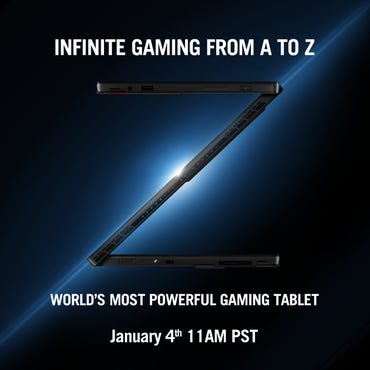
Written by
Sean Portnoy, Contributor

Sean Portnoy
Contributor
Sean Portnoy started his tech writing career at ZDNet nearly a decade ago. He then spent several years as an editor at Computer Shopper magazine, most recently serving as online executive editor.
Full Bio
Posted in Laptops & Desktops
on December 31, 2021
| Topic: Tablets

Lenovo’s Legion Y700 teaser graphic
Dedicated gaming tablets haven’t been “a thing” in several years, as the hardware just hasn’t been beefy enough to handle more than casual games. In fact, the leading “gaming” tablets are probably Apple’s iPad lineup, given the iOS ecosystem of games that’s been built up in recent years. Our list of the best gaming tablets doesn’t include anything resembling a dedicated unit for gamers, but that might change in 2022.
Two PC manufacturers that have created successful gaming brands in recent years appear to be branching out into tablets specifically designed for gaming, according to information they are leaking out before CES 2022 begins next week. Lenovo kicked things off last week with some fleeting details on Chinese social media site Weibo about a new Legion Y700 tablet, and Asus has followed with a teaser of its own (see below) via its Republic of Gamers Twitter feed about what it’s calling “the world’s most powerful gaming tablet.”

Details are scarce for both tablets, though Asus mentions that it will reveal more about the “ROG Flow Z13” on January 4 as part of its CES announcements. Lenovo has given us a bit more information, however, including that the Y700 will run Android and is built around a 8.8-inch display with 2,500×1,600 resolution and 120Hz refresh rate. But some of the other key specs — processor, amount of RAM and storage — and pricing are still unknown. It’s also released some official product photos, which you can view here.
Given its boast, Asus is presumably not going to be using Android for the Flow Z13, which appears to toe a fine line between tablet and small 2-in-1 laptop. Tech sites have noted that the teaser image shows a slot for the Asus XG Mobile external graphics unit, which not surprisingly works with the ROG Flow X13 laptop. It will be interesting to see how Asus attempts to set the Z13 apart from the X13, given the number of similarities they appear to share.
Despite the varying approaches to creating a gaming tablet, Asus and Lenovo are promising the most concentrated effort to revive the genre since the Nvidia Shield and competing tablets fizzled out a half-decade ago. Has the passage of time made the idea of a dedicated gaming tablet any more palatable to gamers, or will these devices suffer the same fate as their predecessors? It will be a fascinating storyline to follow as 2022 unfolds.
Hardware
|
Mobility
|
Smartphones
|
Reviews